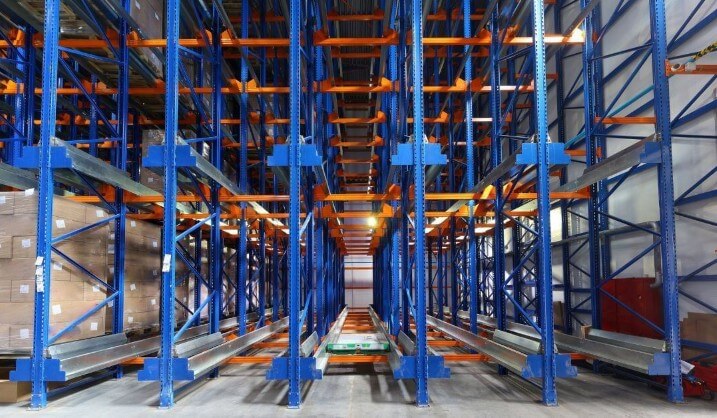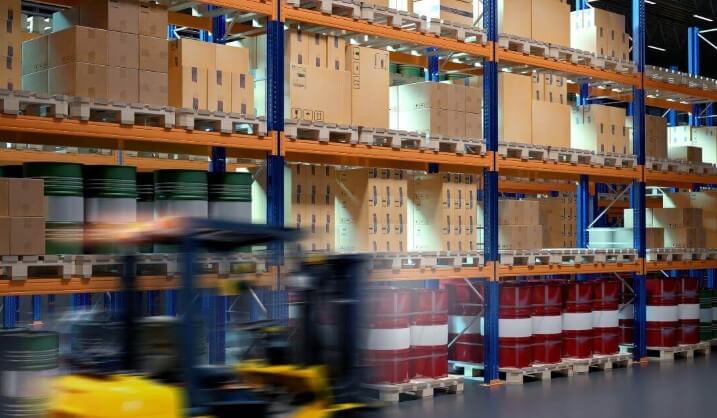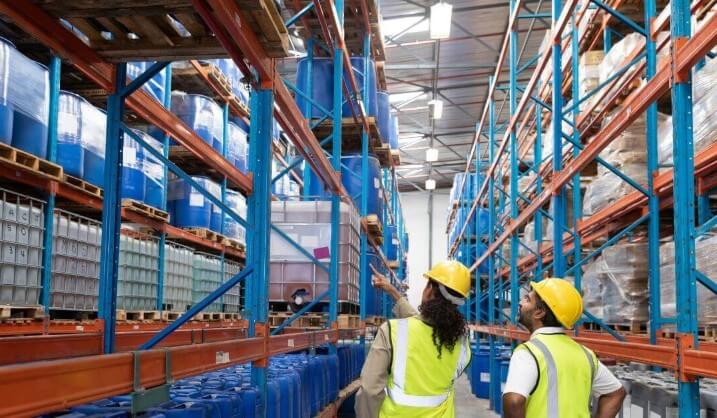Drive-In vs. Drive-Through Pallet Racking: Which To Choose

pallet racking systems
Warehouse management requires careful planning and adaptation to meet the demands of the rapidly changing business landscape. With e-commerce continuing to grow and customers expecting faster deliveries, optimizing storage solutions is crucial. One significant consideration for warehouse optimization is choosing between drive-in and drive-through pallet racking systems. Each offers unique benefits and challenges, and understanding these options will allow you to make an informed choice. Explore the differences between drive-in and drive-through pallet racking to help you determine which to choose for your business.
What Is Drive-In Pallet Racking?
Drive-in pallet racking is designed to maximize space by allowing forklifts to enter and maneuver within the racks themselves. This setup creates a dense storage environment that can accommodate numerous pallets. The design is particularly suitable for warehouses dealing with uniform products that do not require frequent inventory rotation.
A key characteristic of drive-in racking is its last-in, first-out (LIFO) inventory management approach. This is ideal for products that are not time-sensitive and have a longer shelf life.
Drive-in racking system construction consists of several parallel storage lanes. Vertical frames support these racks, providing the necessary structural integrity to handle heavy loads. The system’s design allows forklifts to easily access and store pallets deep within the racks.

What Is Drive-Through Pallet Racking?
The drive-through pallet racking system allows forklifts to pass straight through the racks. This design facilitates first-in, first-out (FIFO) inventory management, where the first pallets you store are the first you will retrieve.
In a drive-through system, forklifts can enter from one side to load and from the opposite side to retrieve pallets. This setup is ideal for businesses dealing with perishable goods or products with expiration dates, as it ensures proper product rotation and minimizes the risk of spoilage.
The drive-through racking system incorporates open-ended storage supported by vertical frames. This design allows for efficient airflow and lighting, creating a safer working environment. The dual access points enhance operational efficiency by reducing the time needed for material handling.
Key Differences Between Drive-In and Drive-Through Racking
Drive-through pallet racking shares similarities with the drive-in system but differs in its approach to inventory management. As mentioned, drive-in racking is best suited for non-perishable goods that don’t require frequent rotation, while drive-through racking supports products needing regular access and rotation.
Both systems also have different spatial requirements, as drive-through racking necessitates more room for forklift passage. Both systems aim to increase storage density, but their operational goals and suitability for different product types make them distinct choices.
Pros and Cons of Drive-In Pallet Racking
Drive-in pallet racking offers several advantages and disadvantages that you should consider when evaluating your options. Understanding these pros and cons can help you determine whether this system aligns with your needs.
Pros of Drive-In Racking
Drive-in pallet racking offers significant advantages, particularly in maximizing warehouse storage capacity. By eliminating the need for aisle spaces between racks, this system provides high-density storage and can house large volumes of similar products.
Furthermore, this system benefits operations where inventory access frequency is lower, allowing for more efficient use of available floor space. This is particularly useful for warehouses that store seasonal stock.
Cons of Drive-Through Racking
Drive-in racking also has some drawbacks. The reliance on the LIFO inventory system can be a limitation for businesses that require more dynamic stock rotation. Additionally, this system can increase the risk of product or rack damage due to the frequent maneuvering of forklifts in confined spaces. Limited access points can also slow down retrieval times, potentially affecting operational efficiency.

When choosing between drive-in and drive-through pallet racking systems, it’s essential to consider your warehouse’s unique needs and priorities. Making an informed decision involves evaluating factors such as inventory type, turnover rate, available space, and budget.
Start by assessing your inventory. If you’re dealing with uniform products that don’t decline in quality over time, the drive-in system’s storage density may be an advantage. However, if your inventory includes perishable goods or items with expiration dates, the drive-through system’s FIFO approach will help you maintain product quality.
Next, evaluate your space constraints and operational flow. Drive-in racking is suitable for warehouses with limited space, while drive-through racking may require more room for dual access. Consider how each system’s layout affects your material handling processes and overall efficiency.

Lastly, consider your budget and long-term goals. Drive-in racking typically involves lower infrastructure costs, making it an attractive option for businesses with financial limitations. Drive-through racking, however, offers benefits like improved product rotation and accessibility, which may justify the higher initial investment.
Pros and Cons of Drive-Through Pallet Racking
Drive-through pallet racking also presents certain advantages and disadvantages that are worth considering. Evaluating these factors will help you determine whether this system meets your specific warehousing requirements.
Pros of Drive-Through Racking
Drive-through pallet racking provides excellent inventory management flexibility by allowing access from both sides of the rack. The design supports faster loading and unloading, enhancing productivity in busy operations. This system is well-suited for businesses dealing with perishable goods or those prioritizing quick product turnaround.
Cons of Drive-Through Racking
Drive-through racking typically requires more floor space than drive-in systems, potentially reducing overall storage density. Also, the dual-access design can lead to higher setup costs and may not be necessary for all warehouse types. If you only have a small warehouse blueprint to work with, drive-through racking could take up the bulk of your space.
Additionally, the increased movement of forklifts and workers accessing both sides of the racks heightens the risk of incidents. This means that maintaining proper alignment and structural integrity of the racks is crucial to prevent accidents.
Where To Find Pallet Racking Options
Finding a reliable pallet racking system installer will allow you to implement the right storage options in your warehouse. Pantero is a reputable pallet racking provider offering a wide range of solutions tailored to meet your business’s storage needs.
Our expertise in storage and material handling solutions ensures that you receive high-quality products and exceptional services. Our team of professionals can guide you through the selection process, helping you choose the best racking system for your warehouse. Drive-in and drive-through pallet racking systems each offer unique benefits and challenges for warehouses. By understanding these systems and evaluating your specific needs, you can make an informed decision that enhances your warehouse’s efficiency and productivity. Explore our wide range of pallet racking solutions at Pantero to discover the best fit for your business.
How To Select a Pallet Racking Type for Your Warehouse
When choosing between drive-in and drive-through
pallet racking systems
it’s essential to consider your warehouse’s unique needs and priorities. Making an informed decision involves evaluating factors such as inventory type, turnover rate, available space, and budget.
Start by assessing your inventory. If you’re dealing with uniform products that don’t decline in quality over time, the drive-in system’s storage density may be an advantage. However, if your inventory includes perishable goods or items with expiration dates, the drive-through system’s FIFO approach will help you maintain product quality.
Next, evaluate your space constraints and operational flow. Drive-in racking is suitable for warehouses with limited space, while drive-through racking may require more room for dual access. Consider how each system’s layout affects your material handling processes and overall efficiency.
Lastly, consider your budget and long-term goals. Drive-in racking typically involves lower infrastructure costs, making it an attractive option for businesses with financial
limitations. Drive-through racking, however, offers benefits like improved product rotation and accessibility, which may justify the higher initial investment.
